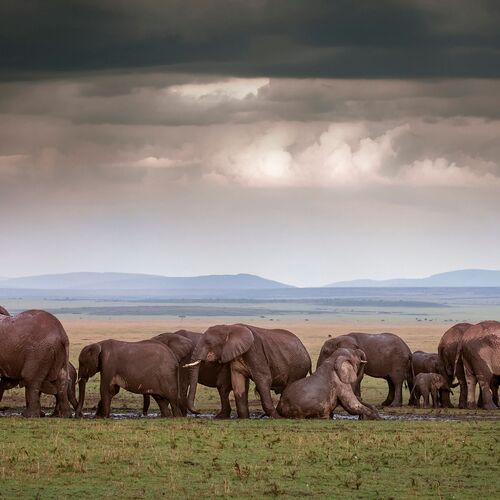The Masai Mara
Masai Mara and the Serengeti in Tanzania must share the prize for being the most filmed wildlife districts on the whole continent, if not in the whole world. But this is not the only thing they share, they also share a border and more importantly many free roaming animals, of which the great migration of wildebeest and zebra is the most visible. Around July these animals stream into the reserve from the south and fill the savannah’s grasslands with big game animals, and the air with birds of prey. Typically they will leave the Masai Mara again in October, but the precise timing of the migration does vary from year to year, as it depends on where and when the rain fall which allow new, fresh grass to grow.
One of the most spectacular events on this never ending search for new grazing land, is when the herds of game must cross the Mara river. The river is home to many crocodiles, some of which are particularly big. At times the river also presents other dangers, which actually claim more lives than the crocodiles, namely high waters and a strong current. The crossing can therefore sometimes be a dramatic fight between life and death, but at other times it is a beautiful, peaceful experience, when the river is calm and the crocodiles have eaten their fill.
However a safari in Kenya´s Masai Mara offers much more than just the migration. As home to nearly all of the classic big game animals, it can be difficult to pick out its most distinctive feature. If we had to choose just one, it would be the large predators, as large populations of lions, leopards, cheetahs and spotted hyenas are all present, and they are seen more frequently than just about anywhere else on the continent. The reserve is also home to good numbers of elephants, black rhinoceros, buffalo and giraffes as well as a wealth of antelope species. The Masai Mara is also a paradise for birds of prey, no less than 57 species.
The Masai Mara is actually a national reserve and not a national park, however the difference is only an administrative one, as the park is administered by the regional authorities rather than the national. The surrounding concessions, which can be regarded as Masai Mara’s bufferzone, have more or less the same character as the reserve itself. In the language of the local Masai people Mara means spotted, whether this refers to the trees that dot the landscape of the animals is not totally clear.
Highlights:
• A great wealth of animal life, with the Mara-river and the slopes of the Rift Valley providing a background
• The great migration of wildebeest and zebra, especially the crossing of the Mara River
• The many lions, and large spotted predators: leopards, cheetahs and hyenas
• A Balloon safari over the savannah in the gentle golden light of the early morning sun
High season: July to October
These attractions can be seen on the following tours






























